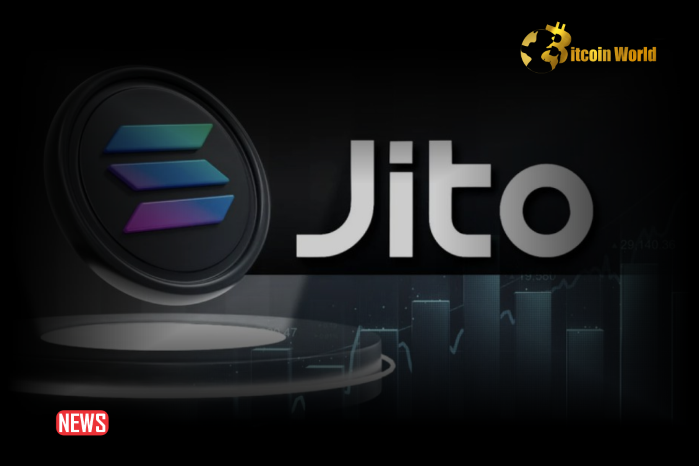Solana is making significant strides in the world of decentralized finance (DeFi), and the latest development is a game-changer! Imagine a future where the Solana network becomes even more robust and secure, all while unlocking new possibilities for users and developers. That future is looking brighter than ever, thanks to the Jito Foundation’s groundbreaking release of open-source code for Solana restaking. Let’s dive into what this means for Solana and the wider crypto ecosystem.
What’s the Buzz About Restaking?
If you’re new to the term ‘restaking,’ don’t worry, we’ll break it down. Think of it as a way to supercharge the security and utility of blockchain networks. In simple terms, restaking allows users who have already staked their crypto assets to use those same assets to secure multiple networks or applications simultaneously. It’s like getting more mileage out of your already staked assets!
Here’s a breakdown of why restaking is such a hot topic:
- Enhanced Security: By leveraging existing staked assets, restaking strengthens the economic security of blockchain networks and decentralized applications. This makes them more resilient against attacks and manipulation.
- Increased Capital Efficiency: Users can earn rewards from multiple sources with the same staked assets, improving capital efficiency and potentially boosting returns.
- Innovation Catalyst: Restaking opens doors for new types of decentralized services and applications, often referred to as ‘Actively Validated Services’ (AVS). These AVSs can benefit from shared security, fostering innovation within the ecosystem.
Jito Foundation: Leading the Solana Restaking Charge
Enter the Jito Foundation, a key player in the Solana ecosystem. They’ve just dropped a major bombshell – the release of their open-source code for a Solana staking and restaking program. This isn’t just any code release; it’s the first of its kind for Solana, marking a pivotal moment for the network.
Jito Network is known for its infrastructure contributions to Solana, and this latest release further solidifies their commitment to pushing the boundaries of what’s possible on the network. Their open-source codebase is designed to be incredibly versatile, allowing virtually any protocol built on Solana to tap into the power of restaking.
Key Highlights of Jito’s Restaking Code:
- Open Source and Accessible: The code is publicly available, encouraging community involvement, transparency, and further development.
- Flexibility is King: Jito’s approach is all about flexibility. Unlike some restaking models that restrict collateral types, Jito’s code allows protocols to accept almost any crypto asset for economic security. This is a massive advantage for projects building on Solana.
- Power to the Protocols: The code empowers Solana-based protocols to easily set up mechanisms for providing economic security to a wide range of on-chain applications or AVSs.
Solana Restaking vs. Ethereum’s EigenLayer: What’s the Difference?
You might be familiar with EigenLayer on Ethereum, which has popularized the concept of restaking. While both aim to achieve similar goals, there’s a key difference in approach. EigenLayer, in its current form, primarily focuses on ETH, certain ETH derivatives, and its native EIGEN tokens as collateral for restaking.
Jito’s Solana restaking takes a different route, embracing a more开放 and customizable model. As Lucas Bruder, a contributor at Jito Network, aptly put it:
“The flexibility and customization allowed in this architecture will be especially useful for the most important customer of these systems – the AVSs.”
This emphasis on flexibility means that Solana’s restaking ecosystem could potentially be more diverse and adaptable, catering to a wider range of projects and use cases. Imagine AVSs on Solana being secured by a variety of tokens, not just SOL, but also other popular Solana-based assets. This opens up exciting possibilities for the entire Solana ecosystem.
What Does This Mean for the Future of Solana?
Jito’s code release is a significant step forward for Solana restaking. While the code is currently undergoing audits and is yet to be implemented on the Solana mainnet, the groundwork is being laid for a potentially transformative upgrade to the network.
Looking Ahead:
- Mainnet Launch on the Horizon: While no specific date is set, implementation on the Solana mainnet is expected later this year. This is when we’ll see restaking truly come to life on Solana.
- Competition and Innovation: Jito is leading the charge, but other protocols and startups are also exploring restaking solutions for Solana. This healthy competition will likely drive further innovation and refinement in the space.
- Growth of the Solana Ecosystem: Restaking has the potential to attract more developers and users to Solana by offering enhanced security, new revenue streams, and greater utility for staked assets.
Is Solana Restaking Right for You?
Whether you’re a Solana holder, a developer building on Solana, or simply interested in the future of DeFi, restaking is something to keep a close eye on.
Potential Benefits for You:
| For Solana Users | For Solana Developers |
|---|---|
|
|
Conclusion: Solana’s Restaking Future is Bright
Jito Foundation’s open-source restaking code is a major leap forward for Solana. It’s not just about adding another feature; it’s about fundamentally enhancing the network’s security, flexibility, and potential for growth. As Solana continues to evolve and attract more projects and users, restaking is poised to play a crucial role in shaping its future. Keep watching this space – the Solana restaking revolution is just getting started!
Disclaimer: The information provided is not trading advice, Bitcoinworld.co.in holds no liability for any investments made based on the information provided on this page. We strongly recommend independent research and/or consultation with a qualified professional before making any investment decisions.


